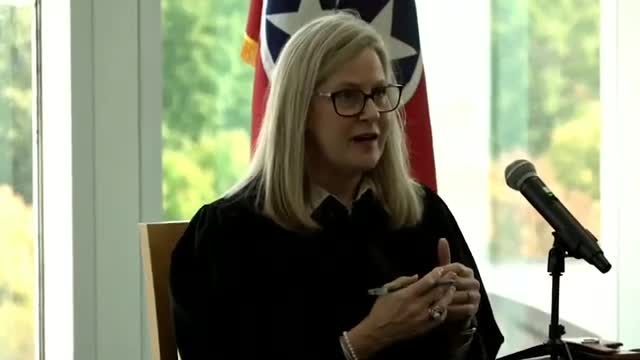Key testimony reveals critical evidence in murder case
October 25, 2024 | Judicial, Tennessee
This article was created by AI summarizing key points discussed. AI makes mistakes, so for full details and context, please refer to the video of the full meeting. Please report any errors so we can fix them. Report an error »

In a recent court hearing, discussions centered around the credibility of witness testimony and the implications for the defendants involved in a felony murder case. The focus was primarily on the testimony of Ms. Brown, who claimed to have witnessed critical events surrounding the crime. The prosecution argued that her testimony, supported by text messages, phone records, and cell location data, provided sufficient corroboration to establish the defendants' involvement.
The state maintained that even slight corroboration of Ms. Brown's account was adequate for a reasonable jury to infer the defendants' criminal responsibility. They highlighted the extensive communications between Mr. Orr and Mr. Porter, suggesting that these interactions indicated a level of complicity beyond mere presence at the crime scene. Notably, the prosecution pointed to a text message from Mr. Orr asking Mr. Porter if he should \"do\" Ms. Brown, interpreting this as a potential indication of intent to kill.
Defense arguments questioned the reliability of Ms. Brown's testimony, particularly regarding the possession of the weapon used in the crime. They contended that without clear evidence linking Mr. Porter to the weapon, his criminal responsibility was tenuous. The defense also pointed out that the jury's acquittal of Mr. Porter on a felon in possession charge could suggest inconsistencies in the prosecution's case.
The prosecution countered that circumstantial evidence, including Ms. Brown's observations of the crime scene and the absence of stolen items, supported their claims. They argued that Mr. Porter’s statements and actions during the incident indicated he was not merely a bystander but played a significant role in the events leading to the murder.
As the court deliberates on these complex issues, the outcome will hinge on the jury's interpretation of the evidence presented, particularly the weight given to witness testimony and circumstantial evidence in establishing criminal responsibility.
The state maintained that even slight corroboration of Ms. Brown's account was adequate for a reasonable jury to infer the defendants' criminal responsibility. They highlighted the extensive communications between Mr. Orr and Mr. Porter, suggesting that these interactions indicated a level of complicity beyond mere presence at the crime scene. Notably, the prosecution pointed to a text message from Mr. Orr asking Mr. Porter if he should \"do\" Ms. Brown, interpreting this as a potential indication of intent to kill.
Defense arguments questioned the reliability of Ms. Brown's testimony, particularly regarding the possession of the weapon used in the crime. They contended that without clear evidence linking Mr. Porter to the weapon, his criminal responsibility was tenuous. The defense also pointed out that the jury's acquittal of Mr. Porter on a felon in possession charge could suggest inconsistencies in the prosecution's case.
The prosecution countered that circumstantial evidence, including Ms. Brown's observations of the crime scene and the absence of stolen items, supported their claims. They argued that Mr. Porter’s statements and actions during the incident indicated he was not merely a bystander but played a significant role in the events leading to the murder.
As the court deliberates on these complex issues, the outcome will hinge on the jury's interpretation of the evidence presented, particularly the weight given to witness testimony and circumstantial evidence in establishing criminal responsibility.
View full meeting
This article is based on a recent meeting—watch the full video and explore the complete transcript for deeper insights into the discussion.
View full meeting
